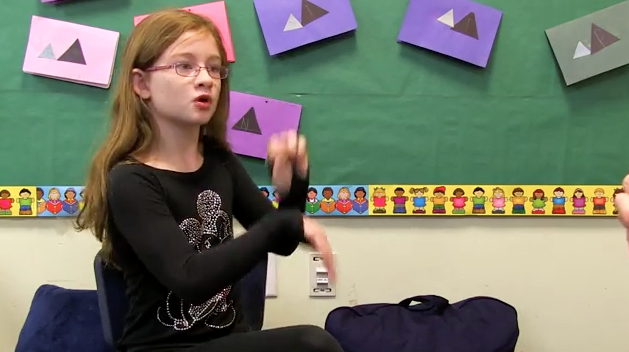
Chloe shares her desire to go to college and to become a Veterinarian. She enjoys history and social studies. Donate now to support Chloe and the other youngsters at The Learning Center for the Deaf chase their dreams.

Chloe shares her desire to go to college and to become a Veterinarian. She enjoys history and social studies. Donate now to support Chloe and the other youngsters at The Learning Center for the Deaf chase their dreams.
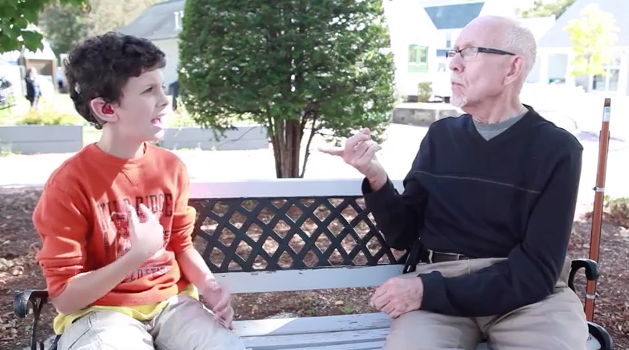
Max shares his appreciation for his education and the teachers at The Learning Center for the Deaf. Donate now to support Max and the other youngsters at The Learning Center for the Deaf and help them chase their dreams.
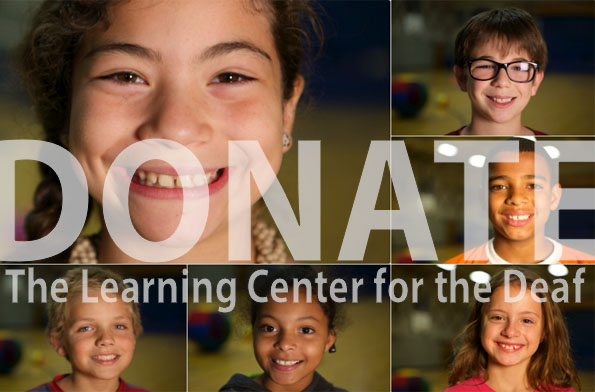

Who was it that gave your life that big push just when you needed it? Remember? I’m sure you do. It’s simple. Without that special somebody, we wouldn’t likely be where we are today. For many of you it was a teacher or mentor who put life into perspective.
At StreetLeverage we believe that the good people working at The Learning Center for the Deaf in Framingham, MA are a group of just those people. As such, we are working as part of our StreetLeverage – Live 2015 event to raise money to help them continue to brighten the future of deaf kids.
We invite you to be that special someone in the life of somebody else by donating $9.50 to the ASL Curriculum Project at The Learning Center for the Deaf. Enter donation amount and number of tickets (if able to attend) below.
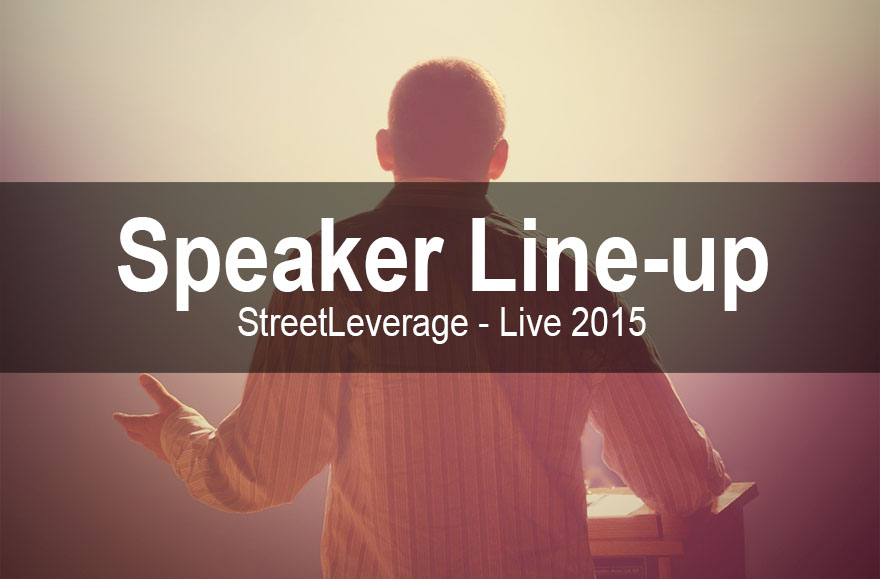
 Jimmy Beldon
Jimmy Beldon
Jimmy, CDI, M.A., is the co-owner of Keystone Interpreting Solution, a consulting and interpreter referral business. He currently teaches in the Interpreter Training Program at St. Catherine University in St. Paul, Minnesota. A renowned interpreter in the court system, Jimmy is a former VP of the Registry of Interpreters for the Deaf and the current VP of the Conference of Interpreter Trainers.
 Patrick Graybill
Patrick Graybill
Patrick was among the original members of the National Theatre of the Deaf troupe. After leaving NTD, he taught performing arts and literature at the National Technical Institute for the Deaf and spent time working at Sign Media. Now retired, it has been his joy to be a consultant with sign language interpreters or a tutor for interpreting students and observe how English can be translated into American Sign Language.
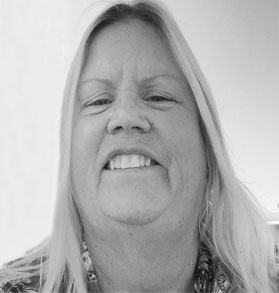
Leslie Greer
Leslie received her Linguistic MA from the University of Rochester, New York. She is currently the first Deaf president of CIT since 2012. She is a past president of ASLTA for two terms. Currently Leslie is the ASL Department Chair at the Mt. San Jacinto College, Menifee, California. She is fluent in Japanese Sign Language.

Joseph Hill
Joseph is Assistant Professor in the Specialized Education Services department at the University of North Carolina at Greensboro. His areas of interest in socio-historical and -linguistic aspects of African-American variety of American Sign Language and attitudes toward signing varieties in the American Deaf community. Mindy Hopper
Mindy Hopper
Mindy, Deaf, has been in the field of Deaf and interpreting education for 30+ years. Currently, she is teaching for the Department of Liberal Studies at the National Technical Institute for the Deaf in Rochester, NY. Mindy argues that d/Deaf people are savvy navigators, despite being confined to the periphery of spoken language privilege communities.
 Marvin Miller
Marvin Miller
Marvin teaches Deafhood classes across the country to the Deaf community, and he is on the board of Deafhood Foundation. Marvin has a background in media and journalism. He is father of four Deaf children, and he resides in Washington, DC.
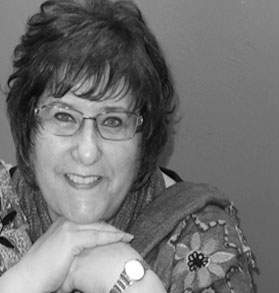 Sharon Neumann Solow
Sharon Neumann Solow
Sharon is a heritage signer who works with great joy as an interpreter, coordinator, performer, lecturer, author and consultant. Her 50-year career has taken her around the world. A working interpreter, who enjoys working with people with limited language proficiency, Sharon’s most significant contribution is 3 fabulous granddaughters.
 Amy Williamson
Amy Williamson
A bilingual child of Deaf parents. A traveler. Amy is the mama of 2 sweet boys who are filled with mischief and magic. They are Otis, 10 and Ben Sky, 8. Amy also has a 22 year old daughter, Mika, who is a 4th year student at RIT. She is the daughter of Mary Ella Scarboro and Barney Williamson, both former teachers at the Eastern NC School for the Deaf. She LOVES the work she does and is an interpreter by choice, not by birth.
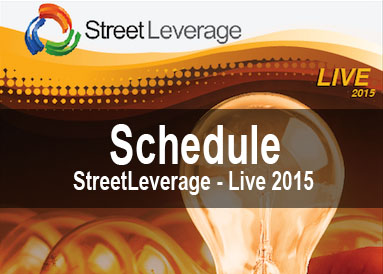
10:00a – 12:00p – MJP Competition Finals (.2 CEU)
2:30p – 4:30p – Panel Discussion (.25 CEU)
Dinner (on your own)
Marvin Miller: Deafhood: Liberation, Healing, and the Sign Language Interpreter
Joseph Hill: Sign Language Interpreting: Practicing with a Socially Conscious Approach
Amy Williamson: Deaf Parented Interpreters: A Challenge to the Status Quo in Interpreter Education
Sharon Neumann Solow: Genuine Confidence: Why Can’t it be All About Me?
Lunch (on your own)
Marvin Miller: Deafhood and Interpreting: Uncovering Our Unexamined Consciousness
Joseph Hill: How Sign Language Interpreters Use a Socially Conscious Approach to Culturally Diverse Interactions
Amy Williamson: Different Doors, Same Stage: How do Sign Language Interpreters Achieve Professional Status?
Sharon Neumann Solow: Building Genuine Confidence: Stepping Stones to a More Comfortable Interpretation Experience
Facilitated by Anna Witter-Merithew and Kellie Stewart
Leslie Greer: Competency Gap: Avoiding Casualties in the Field of Sign Language Interpreting
Mindy Hopper: Incidental Learning With Deaf Students: Is There a Role for Sign Language Interpreters?
Jimmy Beldon: Deaf Interpreters: A Catalyst for Revolution in Sign Language Interpreting
Patrick Graybill: Implicit & Explicit Meaning: Implications for Sign Language Interpreters
Lunch (on your own)
Leslie Greer: Open Source Models: Curriculum that Fills the Gap in Sign Language Interpreter Education
Mindy Hopper: Deaf Students Positioned as Relegated Bystanders: Implications for the Field of Sign Language Interpreting
Jimmy Beldon: Deaf Interpreters: A Catalyst for Revolution in Sign Language Interpreting
Patrick Graybill: Semantic Tools for Sign Language Interpreters
* Attendees can earn up to 2.0 Professional & General Studies CEUs at the Little/None & Some Content Knowledge levels.
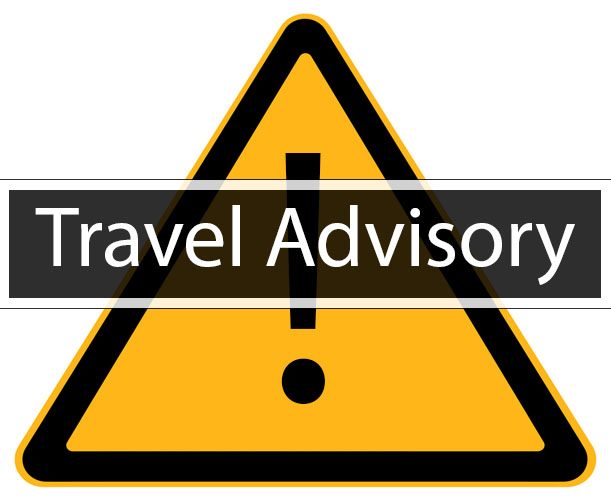
 Boston Metro Will be Busy During StreetLeverage – Live!
Boston Metro Will be Busy During StreetLeverage – Live!On the third Monday in April, Bostonians celebrate Patriots’ Day, which remembers the Battles of Lexington and Concord, struggles that marked the beginning of the American Revolutionary War.
Boston locals have ample opportunity to celebrate on Patriots’ Day in Boston, including a game a Fenway, reenactments, and the annual Boston Marathon, where hordes of people line the race route and loudly cheer on runners.
It means that if you live local or are staying local, but not in the event hotel, you will need to plan your travels carefully to accommodate the events (and the preparation for them) going on around the Boston Metro area.
* It also means that you if you are traveling in from afar, waiting to make your flight and hotel arrangements will prove very costly (and not a little bit). We anticipate available hotel rooms booked in March/April to exceed $250.00/night (if not sooner).
As you may know, we have already filled our room block with the Marriott. We have booked additional room blocks at 2 nearby hotels and are inquiring about a 3rd.
You can find additional information on our expanded room blocks here.


StreetLeverage—Live spotlights sign language interpreters and industry stakeholders who are rethinking the way we understand, practice, and tell the story of the sign language interpreter.
Held annually, this event endeavors to provide a platform where ideas are exchanged, connections are formed, and proactive thinking is encouraged in order to propel the field forward and refocus attendees on the impact of their work.
* Event details can be found via the menu on the left-hand side of this page.
Each morning attendees are addressed by a series thought leaders in a TED style session of 20-minute talks. Each speaker is followed by a 15-minute period of question and answer.
You can check out past StreetLeverage – Live talks by clicking here.
The main session each morning is followed by an afternoon of concurrent sessions presented by the morning’s speakers. This gives attendees an opportunity to explore the morning’s topics on a deeper level.
The evenings are filled with networking, entertainment and evening sessions.
It is the aim of StreetLeverage – Live to foster an enhanced sense of community by uniting and mobilizing interpreters and industry stakeholders in an effort to create meaningful change within the field of sign language interpreting.

Altering our approach to problem-solving by moving from blame to accountability can transform the field of sign language interpreting.
Have you ever felt a great line of divide working its way through the interpreting profession? It seems that recently every group discussion, article, or even online discussion revolves around one group being frustrated with the actions of another group. If I am being honest, I must admit, I am guilty.
The more I started thinking about my own frustration, the more I realized I was part of the problem. To become frustrated with a group and sit quietly in that frustration or even worse, talk about it with my peers, only allows the problem to fester. It is because of that realization this article started to develop. I realized that I did not want to be a part of the great divide; I would prefer to accept responsibility for my actions and become part of an even greater solution.
The divisions within the sign language interpreting profession are deep and impactful. We have become a field where like-minded individuals group together, spending our time pointing fingers and placing blame rather than accepting responsibility for our own behavior. The great divide extends to many groups:
There are also many variations outside of and within these groups. Make no mistake; none of the groups listed are perfect. But what good is it to voice our complaints about these groups if we have no solutions? If complaints are constantly being emphasized, without solutions, then the complainer becomes part of the problem.
There are several issues within the groups listed above that we have the ability to control. While this article cannot address every divided group in the profession, let us look at one of the pairings as an example: nationally certified sign language interpreters versus novice sign language interpreters. More and more often, I have heard novice interpreters express frustration at the way they feel certified interpreters look down on them. I also hear certified interpreters express concerns about how novice interpreters are quick to take work they are not qualified to accept. We see the potential problem within each group’s perceptions. Now, let us discuss possible solutions.
Certified sign language interpreters should accept responsibility for fostering the growth of those novice sign language interpreters. There are many ways this can be done, such as mentoring, providing positive feedback, encouraging them in the right direction, and being mindful of how we approach them to give feedback.
I have heard the phrase “Certified Interpreters eat their young” more than once. While we may joke about this phrase, there are novice sign language interpreters who are afraid to reach out because they feel this statement is true. As certified sign language interpreters, we must be accountable for our actions. We should not base our opinion on our own beliefs and thoughts, rather, we should reach out to our peers for help when we are mentoring or giving advice. Remember, just because the advice did not come from us does not mean the advice is not valid. We should respect the advice that our peers have shared even if we would not offer the same feedback.
We also need to acknowledge when the novice interpreter is trying to follow the rules and be patient while they continue to advance their skills and knowledge. We are setting the standard those novice interpreters will one day follow.
As novice sign language interpreters, we should also accept responsibility by recognizing that we have an impact on the field of sign language interpreting. Our reputations will be made based on the decisions we make as we advance through the field.
When in doubt, it is appropriate to reach out to trusted certified sign language interpreters for their advice. We need to be willing to accept feedback from those who have experience. We also need to be willing to decline work that we are not ready to accept, skill-wise.
When we come across certified sign language interpreters who are not approachable, then we must look for others who are approachable. Just like the certified sign language interpreter who must be accountable for their actions, so should the novice interpreter. Remember, we are also representing the community we have become a part of and our actions could reflect positively or negatively on those communities.
Accountability is the key to a successful change. Each of the groups identified have issues that are very important to its members. The challenge is to find solutions to the issues that allow the group to stop pointing the finger, and start accepting responsibility.
The time has come to make a change in our field. The energy we have spent making excuses needs to be channeled into a newfound energy for finding solutions. Recently, in her article, Sign Language Interpreter Education: Time for a National Call to Action, Cindy Volk reached out with a “National Call to Action” and outlined ways for interpreter training programs to make changes. These types of articles are important because they offer suggestions for making change possible.
The examples provided above are just the tip of the iceberg. Today, I used Certified Interpreters v. Novice Interpreters as an example. The list of solutions was not an exhaustive list, but it is a start. The need now is for each of the other listed groups to consider, “How can I be a part of a positive change?”
I challenge these groups to find ways to work together. I challenge people within the groups to write more articles and get involved with more discussions that provide solutions. If there is a problem that the group feels strongly about, find ways to resolve the problem that do not include placing blame on the other group and then walking away.
It does not matter if you are an interpreter, presenter, teacher, student, consumer, or where you fit in, next time you feel strongly about a topic in the field, stop and think about how your response will impact the person listening. Remind yourself that if you just complain, you are part of the problem.
If there is one thing I have learned in all my years of interpreting, it is that this field is very distinct. Although I have been involved in the field since 1996, my family still does not know exactly what I do on a daily basis. They cannot understand what is involved in the whole process, no matter how many times I explain it to them. This has led me to the realization that we are a lonely field. If we turn against each other, who can we turn to for support? We each have a vested interest in the field of interpreting, whether we are service providers, or consumers. We need to look within our own groups and decide whether we are part of the cause of the great divide, or part of the solution to mend the gap.
1. What are some ways sign language interpreters can accept the challenge of bridging the gap?
2. Why are some people fearful about reaching out to opposing groups? What are some of those fears and how can they be addressed?
3. What are some ways we can educate ourselves before we make a quick decision about another group?
Horizontal Violence: Can Sign Langauge Interpreters Break the Cycle? by Kate Block
Strategic Partnerships: Cooperation Among Stakeholders in Sign Language Interpreting Isn’t Enough by Chris Wagner
Sign Language Interpreters: Is It Me? by Brian Morrison
Volk, C. (2014, October 8) Sign language interpreter education: time for a national call to action. Street Leverage. Retrieved from http://www.streetleverage.com/2014/10/sign-language-interpreter-education-time-for-a-national-call-to-action/

Horizontal Violence is a prevalent concern in the profession of interpreting. It causes disharmony, burn out and unsuccessful work. The Demand Control Schema approach to discussing our work could be the answer to lessening the internal strife of our profession.
When did it become acceptable to judge our interpreter colleagues? How did we learn that negatively judging someone’s skills, decisions and professionalism was a good way to behave in our profession? Carl Rogers spoke of unconditional positive regard as a psychological approach to allow a person to reach their full potential as a human being. “The main factor in an unconditional positive regard is the ability to be able to isolate behaviors from the person who commits them” (Rogers, 1961). What if we, as sign language interpreters, could adopt that approach to advance our profession? Overly-critical perspectives of each other have detrimental effects on the collaborative environment required for working interpreters to be successful. Yet this tendency is prevalent in the field, leads to interpreter burn out and plagues our ITPs. So where did it start and most importantly, how do we stop it?
Fellow interpreter, Emily Ott, focused her Master’s thesis on intergenerational communication concerns in the sign language interpreting community and found a disturbing trend in our field, horizontal violence.
“Begley and Glacken (2004) characterized the behaviors of horizontal violence as a broad range of antagonism, including “gossiping, criticism, innuendo, scapegoating, undermining, intimidation, passive aggression, withholding information, insubordination, and verbal and physical aggression. Other specific behaviors include…subtle or overt insults and ridicule, ignoring the victim, making demands that are impossible for the victim to fulfill, or devaluing a person’s work or efforts” (Ott, 2012).
Due to lack of specific research on sign language interpreters, Ott’s research focused predominately on other professional fields with similar characteristics to the sign language interpreting community. “…the fields of nursing and education, which, like interpreting, are service professions where work is done with people. Also, like interpreting, those fields are both comprised of more than 75% women (Ott, 2012). As I read more about the topic of horizontal violence, I realized I had witnessed some of these behaviors personally, and/or had worked with mentees who described such experiences as they worked with colleagues. I felt a sense of relief in discovering that these experiences had a name and that other professions are plagued by the same behaviors. Then, I was filled with dread, knowing the phenomenon of horizontal violence has a name and it was prevalent enough as to be researched and identified.
The field of sign language interpreting is young and the growing pains have been rough. Rotating certifications, increasing education requirements, price competition and progressive use of technology at the cost of best practices have taken their toll. Rather than working together and striving towards the greater good of communication access for an underserved community, sign language interpreters draw lines, build walls and work in fear. We claim we want to be allies for the Deaf community. First, however, we should learn to be allies with ourselves; we should start with our colleagues.
“Harvey (2008) found that interpreters tend to be critical and unkind toward one another as a consequence of witnessing oppression regularly, a situation that causes interpreters to behave like oppressed groups. Freire (1992) would argue that the gender composition of the interpreting field, at 87% female, is the reason interpreters behave like an oppressed group, because the field’s members experience oppression themselves” (Ott, 2012).
Whatever the underlying cause, the symptoms of Horizontal Violence are prevalent. The tendency to point out colleagues’ shortcomings creates hurt feelings, distrust, burn-out and shrinks the qualified interpreter pool as sign language interpreters seek more affirming professional outlets. If we are approaching our work from a basis of fear of judgment, we will never do our best, take chances or advance to a better place.
Sign language interpreters are taught how to identify language errors very early in our careers, but we are not taught how to collaborate towards a common goal in our work or how to talk about our work in a safe, neutral way. The words “you did” and “I would have done” fall out of our mouths like old habits. We often focus on the person, rather than the work product. We forget that interpreting is an art, not a science and immediately fall into the “right sign, wrong sign” mode, which we know is not the true way we operate. We know sign language interpreters live in an “it depends” world of work, and yet we take the deontological, or rules-based, approach to judge other professionals’ choices without insight into the unique contexts and thought processes that resulted in that choice. I would suggest that this is not the best approach to our work; do we not have an obligation to rise above?
Earlier this year, I had the opportunity to join a supervision or reflective practice group rooted in the demand control- schema (DC-S). For more information, see Robin Dean’s post, Ethical Development: A Sign of the Times for Sign Language Interpreters? At first, I did not feel qualified to be a part of the group and hesitated to join. While I have seen Robyn Dean and Dr. Pollard lecture on several occasions and felt I had a good working knowledge of DC-S, I knew I still struggled to articulate the aspects of the DC-S and lacked the skill of properly identifying the demands and controls of an interpreting assignment. Nevertheless, I joined; the group consisted of a small group with members from the U.S. and abroad which met online twice a month for two hours for five months. My group facilitator had a wealth of knowledge and understanding of DC-S and had been specifically trained to be a group Supervisor. As the meetings progressed, I realized that I was not alone in my struggles and the facilitator assured the other members and me to “stay with the (DC-S) structure, and trust the process.”
As I got ready to present my first case, I was nervous. Preparing to present gave me the opportunity to reflect on all the demands I was dealing with in this situation – multiple players, politics, medical views of Deaf and Hard of Hearing people, power dynamics, systems barriers, etc. As Kenda Keller states in her article, Case Discussion: Sign Language Interpreters Contain Their Inner “What the…!!!?” , the self-discovery of this process (reflective practice) is profound. Merely taking the time to write down all the demands I encountered during the assignment, as well as the controls I employed, was enough to help me realize (after the fact) just how complicated this situation was to interpret.
As presentation day approached, I focused on the case and the ground rules that had been established at the start of the sessions:
-No judgment language
– Keep the dialogue focused on the case
– Speak when moved
– Confidentiality
– Agree to Disagree
– Unconditional Positive Regard
As I presented and the discussion progressed, I felt enormous relief – as if a weight I had been carrying was suddenly lightened. The ability to speak freely about the choices I made and the reasons I made them allowed for an honest discussion about what interpreters do in our daily work and how we affect the dynamics of an often fluid and ever-changing situation. Ironically, immediately after this interpreting job, I had felt bad and guilty about some of the controls I had employed but after reflecting with my group, I realized all the decisions I had made were based in real professional values. Additionally, I realized the resulting demands did not always have anything to do with me and my applied controls. At the end of our meeting, my interpreting case was not ‘solved’ but having other professional view points, neutral perspectives and new ideas for controls allowed me to go back into this job with a fresh perspective. I may not change applied controls drastically but I will know that I now have more options and a thorough understanding of the reasons behind my choices.
In the end I was grateful for the opportunity and look forward to doing it again. I also look forward to working a case with fellow colleagues in this group, and future groups. Sign language interpreters know the work is difficult. We use controls during an assignment that we sometimes later wish we could take back. But, at the time, and in the moment while we are working, those controls were the best option we felt we had, knowing what we knew. Hindsight is 20/20. Rather than criticizing each other (or ourselves), we need to take those experiences, discuss them in a professional, positive manner and grow. In order to be true practice professionals, we must incorporate case conferencing into the education of future interpreters, as well as our current approach to work.
“Much as horizontal violence leads to professionals being wary of supervision, Catalano and Tillie (1991) found that teachers at all levels who participated in supervision and mentorship felt more engaged, connected and empowered to develop as professionals” (Ott, 2012).
All practice professions need to have a safe place that allows them to honestly analyze, understand, and critique their work. This is no different for the sign language interpreting profession, as Dean and Pollard have pointed out (Dean and Pollard, 2013). Only then will this profession advance and become the effective and ethical profession it can be. It is natural to feel that when we do something, it is with the best intentions. However, we often do not extend that consideration to others. Let us work together to change, so that we may assume of others what we assume of ourselves.
For more information on interpreter case conference opportunities please visit http://demandcontrolschema.com/ and sign up for the e-mail blasts from Robyn Dean and Dr. Pollard.
How Do Sign Language Interpreters Avoid Mentoring’s Dodgy Undertow by Lynne Wiesman
Why Do Qualified Sign Language Interpreters Get Less Work? By Kendra Keller
Sign Language Interpreters: Breaking Down Silos Through Reflective Practice by Anna Witter-Merithew
Dean, R., & Pollard, R. (2004). A practice-profession model of ethical reasoning. Views, 21(9), 25-28.
Dean, R. K., & Pollard, R. (2001). Application of demand-control theory to sign language interpreting: Implications for stress and interpreter training. Journal of Deaf Studies and Deaf Education, 6(1), 1-14.
Ott, Emily K., “Do We Eat Our Young and One Another? Horizontal Violence Among Signed Language Interpreters” (2012). Master’s Theses. Paper 1.
Rogers, C. R. (1961). On becoming a person: a therapist’s view of psychotherapy. Boston: Houghton Mifflin Company.

A reflection on the meaning of reciprocity in the sign language interpreting community and a proposal to extend CEU credit through service to reinvigorate “giving back to the Deaf community”.
When thoughts about volunteering personal time to interpret come to my mind, they are often associated with working with DeafBlind people. For me, it began in 1992 while I was serving as President of Deaf Studies Association at California State University at Northridge (CSUN). A vibrant group of 400 strangers changed my life forever. This group of people communicated in a different mode than I had ever experienced before; they communicated tactilely. When the week ended, I was saying goodbye to new friends who made a difference in my life. People I would still be in touch with twenty years later.
With legislative protections in place and employers recognizing their responsibility to provide communication accessibility for Deaf and DeafBlind individuals, work opportunities are increasing for sign language interpreters. DeafBlind individuals, in particular, are becoming more empowered and visible. They are coming out of their homes where they have lived in isolation and are becoming socially active and joining the workforce. This represents a new market for the sign language interpreting profession. However, there are still life events and activities where the only stakeholder is the Deaf or DeafBlind individual. No agency is offering a service that would mandate hiring a sign language interpreter or Support Service Providers (SSP).
Have you ever stopped to think about how many SSPs it takes for DeafBlind people to attend an event and listen to a presenter? There are always more service providers than consumers in the room. Why is it so hard to find good and plentiful help? The frustrations that Deaf consumers may have in adequately staffing an event with pro bono interpreters is greatly magnified at DeafBlind events where services are usually needed on a one-to-one basis instead of the one-to-many basis seen at many Deaf events.
Unfortunately, many sign language interpreters do not know how to provide effective DeafBlind Interpreting (DBI) or are apprehensive because they haven’t worked with a DeafBlind consumer before. Working with DeafBlind people is more than just a service. We are often an integral link to their world, which many of us cannot begin to imagine.
We need to consider some solutions as a profession. Volunteerism and pro bono service will help develop some new, potentially long-term revenue streams for service providers and, at the same time, provide needed services in the communities we serve.
Our profession struggles with defining the parameters for using a volunteer versus a request for pro bono work. If the IRS views volunteering and pro bono work separately, why do sign language interpreters interchange the meanings? Why does it feel as though colleagues are asking, “What’s in it for me?” When did our profession become so entitled? Why does it seem okay to ask for volunteers for AA meetings, but not job interviews? Are we saying that recovery is less valued than a person’s career? Why am I left with more questions than answers? And why is it so difficult to get people on the same page?
Merriam-Webster’s online dictionary defines pro bono services as “being, involving, or doing professional and especially legal work donated especially for the public good,” whereas a volunteer is defined as “a person who does work without getting paid to do it.”
Significantly, in the field of sign language interpreting, perceptions about the difference between the two categories are boundary-based. Where pro bono services are seen as professional and follow the same guidelines as paid assignments, volunteerism appears to have a more flexible set of boundaries. This can often confuse and/or blur the lines for both the consumer and the interpreter, potentially creating unsustainable expectations. The significant impact on the physical, emotional and mental state of both parties may act as a disincentive for sign language interpreters to provide volunteer services on a sustained basis. A pro bono service model, which seems to provide clearer boundaries for consumers and interpreters, may encourage more participation.
Donating time doesn’t require sacrificing oneself physically, mentally, and emotionally, yet it sometimes feels as if it does. The inability to say no and the tendency to volunteer too much, combined with the high expectations of consumers receiving free service, can be detrimental to good overall health. If we sacrifice too much, we may lose a sense of our self-worth and find ourselves questioning a job that can seem thankless and where we often feel our intentions are misunderstood.
The problem is two-fold: a) we do not have a structured industry standard for providing pro bono services, and b) there is a very real need within the community we serve for daily access to communication when there isn’t an entity to fund the provision. The result: an unsustainable imbalance that taxes the few who do volunteer for any significant length of time throughout their career.
As a volunteer, I fully admit that there are times when my ability to contribute proves to be extremely challenging. I may face periods of emotional turmoil or feel unable to meet the needs of consumers who may over-rely on me because they cannot easily find a reasonable pool of volunteers to cover their needs. At times, I might become angry and question why I continue giving back. But ‘giving back’ is the operative phrase, and more often than not, I feel a sense of pride and accomplishment from contributing to a community that has given so much to me in my life and career via many life-affirming experiences.
It takes a special kind of mentality and willingness to engage in a practice of integrated volunteerism throughout one’s career. It is no wonder the pool of much-needed volunteers is significantly smaller than it should be.
As sign language interpreting students and interns, we are often required to volunteer an exorbitant number of hours in the community to gain the experience and knowledge that will shape us into better interpreters. Why is it that when we graduate or obtain certification many stop volunteering and only attend professional development opportunities to satisfy CEU requirements? Why are so many reluctant to give back to the community and engage in reciprocity? These are some of the core values which build and define the Deaf community.
What if sign language interpreters could earn CEUs for our volunteer work? What if we could get credit for learning new subject matter, methods, or for expanding our skill base? Why have motions for mandatory hours of pro bono work per CEU cycle been deferred to committees or failed when brought to the floor of a business meeting? (Motion D, RID business meeting August 2013)
RID Continuing Education Units (CEUs) are mandated to ensure awareness of the continuing evolutionary changes in language, community and service provision. Yet, the hands-on experiences expected from new entrants to the profession are not expected of our existing professionals. Why the disparity? Experience over time does sharpen one’s skills, but volunteering offers experiences that grow us exponentially in communication, increasing the breadth and depth of concept development in uncharted topic domains. Don’t we want to ensure that practicing professionals have those same enriching experiences throughout their careers?
How can sign language interpreters demonstrate the experience we gain at actual community events where our volunteerism often goes undocumented? How can we quantify these experiences in a meaningful way?
Attitudes on pro bono service need to start with RID. Isn’t it RID’s responsibility to encourage and foster professional growth, much like they do with professional development and CEUs today?
In the RID Vision Statement, “RID envisions a world where…the interpreting profession is formally recognized and is advanced by robust professional development, standards of conduct, and credentials.” Could requiring mandatory pro bono hours help to make that vision a reality? Why is there resistance to investigating the possibilities?
Will the conversation about voluntary membership in RID make it harder for us to enforce professional development of any kind?
In reality, workshops do not always mimic real-life experiences. However well-intentioned the CEU concept was, many interpreters attend workshops to ensure certification maintenance without ever intending to use the tools/concepts learned. In effect, the CEU concept has lost its way. Volunteer and pro bono opportunities, to a greater extent, contribute to skills development while workshops broaden knowledge base.
Adding a pro bono crediting system to supplement RID’s CEU tracking system, could ensure the value of the profession as a whole, because community service would provide a structure for sign language interpreters to go out and experience a variety of real-life situations. A structured pro bono service process led by RID would address this issue, remedy the unintended failings of the CEU system, create a standard of protection for over-taxed volunteers by expanding the pool of available interpreters. At the same time, the system would raise awareness about important community evolutions through direct and active participation, enhance professional expertise, and provide an industry-wide demonstration of goodwill and contribution to the communities we serve. When you think of these outcomes, can you deny that pro bono accreditation is an absolute necessity for the sign language interpreting profession? The excuses against creating a pro bono system can no longer be the accepted norm.
Additionally, establishing clear professional boundaries in a pro bono environment should motivate more sign language interpreters to contribute time to community events. This will greatly expand the pool of available interpreters, reducing the stresses placed upon the small pool of volunteers that exist today, and the challenges the community experiences in attempting to provide communication access within their own events. The results would be positive for all parties involved.
Pro bono work and volunteerism have their place. We just need to recognize how to create a more effective system in our profession. After all, isn’t the ideology behind giving back be good? This type of work provides a real hands-on experience for situations that may otherwise not be possible.
Nagging questions remain for me: What are the emotional, physical and mental costs of giving my time? How much of my life have I sacrificed to give back? Am I justified in feeling angry when I think people have taken advantage of me? Are my core values that different from those interpreters who don’t serve on committees, boards, community planning teams? Why do we see the same people giving their time to the community over and over? Why do we open ourselves up as volunteers to be ridiculed? Why are we willing to put ourselves out there? Why do people question our intentions/motivations? Why can’t I just punch in my 9-5 interpreter card and be done when my job is over for the day? Most importantly, why isn’t RID, our professional organization moving forward in a determined way to address the important issues stated in this article? Am I simply asking too much?
While I cannot answer these questions fully, I know that giving back comes from a deep place in my heart, a place that feels like home when I am there and when I am with people who appreciate my time, my skills, and me. In those moments when a DeafBlind person sees something for the first time and experiences something they have never experienced before, it is there. It’s a place of peace, a place where, if I were to die tomorrow, I would know that I made a mark on this place we call Earth and I made a difference in someone’s life. I give back to people who have given me the tools to communicate, the skills to have a full time job doing something I love with people I respect and admire. Not everyone can be happy deep down; not everyone can give the gift of connection. I serve because I want to and I am a better person for it.
And while I join with others who call for a pro bono credit system, I promise you that at the end of the day, the feeling of self-worth and accomplishment from a successful contribution will dwarf the value of the actual credit you’ve earned for that day. You have my word.
1. What is your community’s stance on pro bono interpreting and volunteer interpreting? What is your personal perspective and why?
2. Why do you think some people oppose credit for volunteer/pro bono service through CEUs?
Would you support RID if they implemented a Credit for Services program for pro bono and/or volunteer work? Why or why not?
3. What are some ways that interpreters can continue to support the value of reciprocity and still maintain healthy boundaries and good self-care?
5 Easy Career Enhancers by Brandon Arthur
Knowledge Brokering: Emerging Art for Sign Language Interpreters? by Laurie Shaffer
#Doable: How Do Sign Language Interpreters Restore Relationships with the Deaf Community? by Tammy Richards
Send this to friend